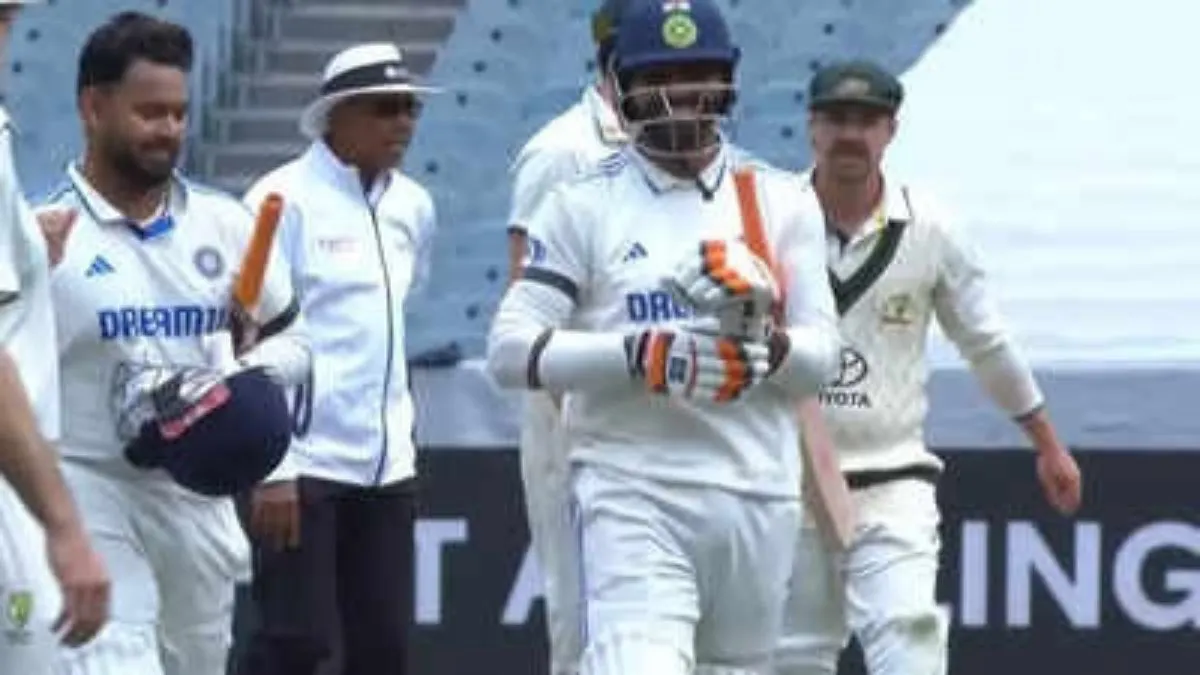- By Namrata Vijay
- Fri, 27 Dec 2024 08:32 PM (IST)
- Source:JND
IND vs AUS 4th Test: The Men in Blue are currently in a precarious situation as they are trailing by 310 runs with just five wickets remaining as they were 164/5 towards the fag end of the second day against Australia of the fourth Test match. They need to score 111 more runs to avoid a follow-on- a situation that looks highly impossible with such an inconsistent batting lineup.
Rishabh Pant and Ravindra Jadeja remained unbeaten at stumps on Day 2 and will face the daunting task of surviving the first session of Day 3. Their staying unbeaten in the middle is quite important for the visitors to get into even more trouble.
According to 14.1.1 of MCC law, during a two-inning match, which goes for about five days or more, whichever team bats first and has a lead of more than 200 runs, does have the option of letting the other team follow their innings.
Also Read: Babar Azam's bail switch does wonder for Pakistan as Temba Bavuma gets dismissed on Day 2
Australia posted a mammoth total of 474 runs during their first innings. If India is skittled out for 274 or fewer runs, then the hosts can declare a follow-on. But if they do score 275 runs then the Pat Cummins-led side won't have the right to declare a follow-on and would be asked to bat again during the second innings.
This rule is usually used to begin the batting team's second innings right after their first innings in the longest format if they couldn't chase a minimum target as compared to the opponent's first innings total.
Follow-on rule
This rule is governed by law 14 of the MCC laws of cricket:
14.1 lead in the first innings
14.1.1 During a two-innings game, which goes on for five days or more, the team which does bats first and has a lead of more than 200 runs, does have the option of letting the other team continue with their innings.
14.1.2 The same rule will be applied during two innings games of fewer days, where the minimum lead would be:
150 runs in a match with 3-4 days
100 runs in a 2-day game
75 runs in a 1-day game
14.2 Notification
A skipper should inform the opponent skipper and the on-field umpire of his decision to use this rule and after it's finalized, the decision won't be changed.
After declaring the follow-on, the team batting first lets the other team start their second innings by skipping the first team's second innings. This rule is usually used when there is less time or if the pitch is getting ruined and that gives the team batting first an upper edge.
This rule of allowing the follow-on depends only on the fielding skipper as it's a strategic decision depending on the pitch conditions.
